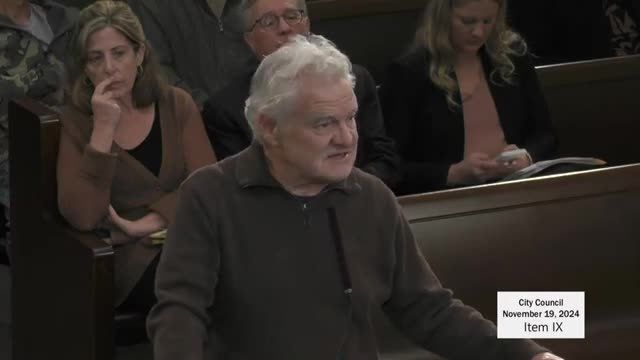City Council Faces Pressure Over Unsecured Buildings and Demolition Plans
November 19, 2024 | City Council Meetings, Oklahoma City, Oklahoma County, Oklahoma
This article was created by AI summarizing key points discussed. AI makes mistakes, so for full details and context, please refer to the video of the full meeting. Please report any errors so we can fix them. Report an error »

During a recent city council meeting, residents and officials engaged in a heated discussion regarding the condition of a deteriorating building and its implications for the community. A concerned resident expressed frustration over the increasing litter in the neighborhood, attributed to youths congregating in empty lots. He urged the council to consider more effective solutions to address the issue, emphasizing the need for community involvement in raising awareness.
The council then turned its attention to a specific agenda item concerning the potential demolition of a building, which had been a point of contention among council members. Councilman Henkel voiced his opposition to spending $200,000 on securing a structure that was slated for demolition, arguing that such expenditure was fiscally irresponsible. His comments sparked a broader debate about the city's responsibility to maintain its properties to the same standards expected of residents.
The discussion highlighted the city's ongoing struggle with several neglected properties, including a salvage yard and a burned liquor store, which have remained in disrepair for years. Council members acknowledged the need for a decisive plan regarding the future of the building in question, with some advocating for immediate action to secure it while others suggested a more measured approach to determine its fate.
Assistant City Manager Aubrey McDermott clarified that any demolition would require approval from the Downtown Design Review Committee, which historically has been reluctant to approve demolitions without a clear plan for redevelopment. This procedural hurdle has complicated efforts to address the building's condition.
In a related agenda item, the council discussed proposed amendments to the Northeast Renaissance project plan, which includes the creation of new tax increment financing (TIF) districts aimed at stimulating development in the area. The proposed changes reflect a collaborative effort to balance community needs with economic development goals, particularly in light of concerns raised by local stakeholders, including the Millwood School District.
As the meeting concluded, council members recognized the urgency of addressing the building's status and the broader implications for neighborhood safety and aesthetics. They committed to providing updates on the progress of various properties in disrepair, signaling a renewed focus on maintaining community standards and fostering development.
The council then turned its attention to a specific agenda item concerning the potential demolition of a building, which had been a point of contention among council members. Councilman Henkel voiced his opposition to spending $200,000 on securing a structure that was slated for demolition, arguing that such expenditure was fiscally irresponsible. His comments sparked a broader debate about the city's responsibility to maintain its properties to the same standards expected of residents.
The discussion highlighted the city's ongoing struggle with several neglected properties, including a salvage yard and a burned liquor store, which have remained in disrepair for years. Council members acknowledged the need for a decisive plan regarding the future of the building in question, with some advocating for immediate action to secure it while others suggested a more measured approach to determine its fate.
Assistant City Manager Aubrey McDermott clarified that any demolition would require approval from the Downtown Design Review Committee, which historically has been reluctant to approve demolitions without a clear plan for redevelopment. This procedural hurdle has complicated efforts to address the building's condition.
In a related agenda item, the council discussed proposed amendments to the Northeast Renaissance project plan, which includes the creation of new tax increment financing (TIF) districts aimed at stimulating development in the area. The proposed changes reflect a collaborative effort to balance community needs with economic development goals, particularly in light of concerns raised by local stakeholders, including the Millwood School District.
As the meeting concluded, council members recognized the urgency of addressing the building's status and the broader implications for neighborhood safety and aesthetics. They committed to providing updates on the progress of various properties in disrepair, signaling a renewed focus on maintaining community standards and fostering development.
View full meeting
This article is based on a recent meeting—watch the full video and explore the complete transcript for deeper insights into the discussion.
View full meeting
